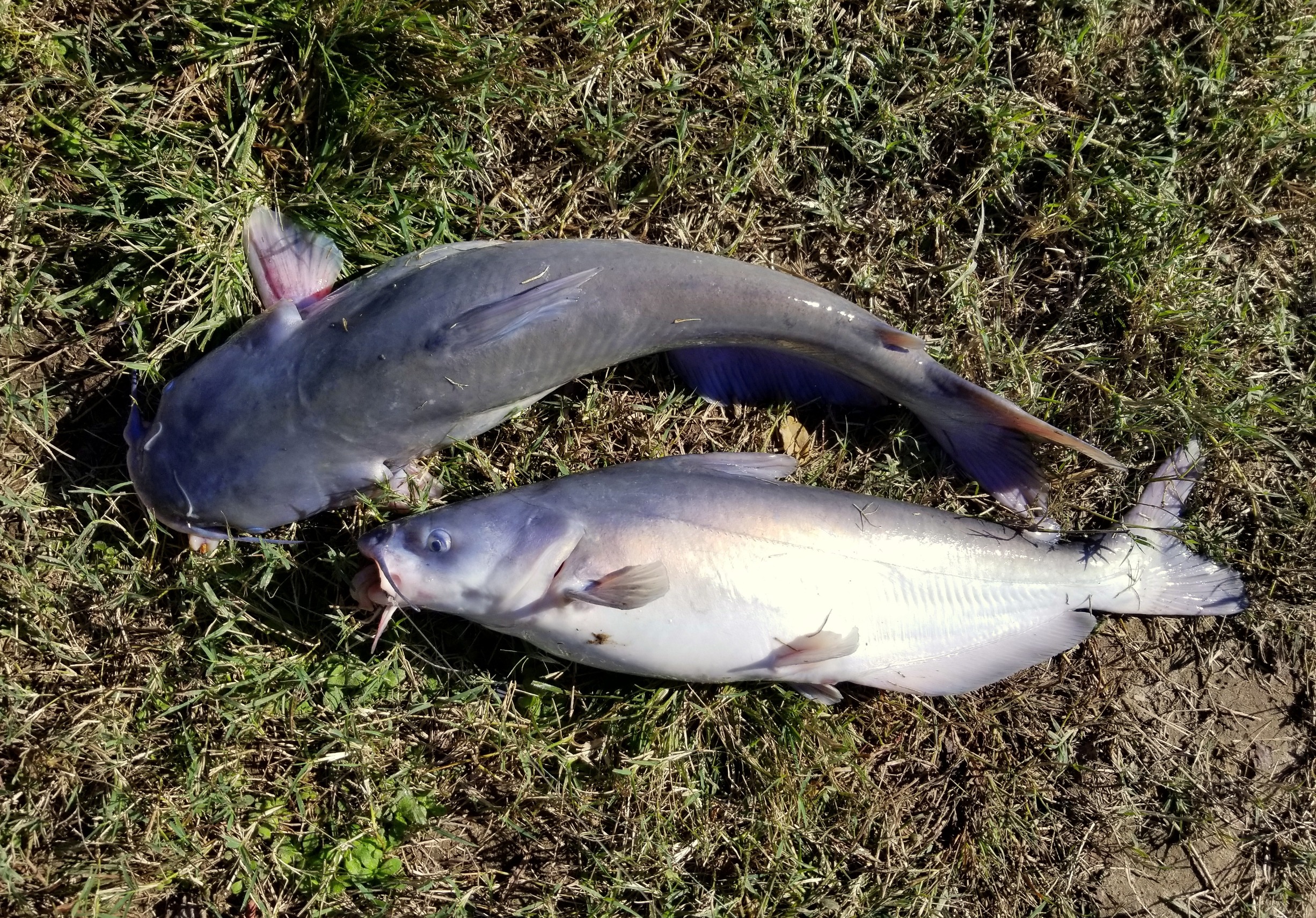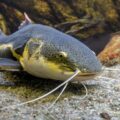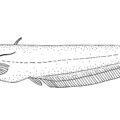Catfish species are abundant in Arkansas, with over 30 different types found in the state’s waters. These fish are known for their whiskers, which are actually sensory organs that help them locate food. They are also popular among anglers, who enjoy the challenge of catching them.
Arkansas is home to several distinct catfish species, each with its own unique characteristics. These include the channel catfish, blue catfish, and flathead catfish. The channel catfish is the most common species found in Arkansas, while the blue catfish is known for its large size and the flathead catfish is prized for its taste.
Understanding the habitats of catfish in Arkansas is key to catching them. These fish can be found in a variety of environments, from small streams to large rivers and reservoirs. They are also known to inhabit ponds and lakes, particularly those with muddy bottoms. Anglers who know where to look and what to use for bait can have great success in catching catfish in Arkansas.

Key Takeaways
-
- Arkansas is home to over 30 different catfish species.
-
- The most common catfish species in Arkansas is the channel catfish.
-
- Understanding the habitats of catfish in Arkansas is key to catching them.
Overview of Catfish Species in Arkansas
Arkansas is home to a variety of catfish species, both native and non-native. These fish are found in the state’s rivers, streams, lakes, and ponds.
The most common catfish species in Arkansas is the channel catfish, which is native to North America and can be found throughout the state. Channel catfish are known for their distinctive forked tail and are often sought after by anglers for their delicious flesh.
Another common catfish species in Arkansas is the blue catfish, which is also native to North America. Blue catfish are larger than channel catfish and can grow up to 100 pounds. They are often found in large rivers and reservoirs.
Flathead catfish, also known as yellow catfish, are another native species found in Arkansas. They are known for their large, flat heads and can grow up to 100 pounds. Flathead catfish are typically found in deep pools and slow-moving streams.
Non-native catfish species have also been introduced to Arkansas waters. The most notable of these is the Asian carp, which has become an invasive species in many parts of the state. Overall, Arkansas is home to a diverse population of catfish species, both native and non-native. Anglers and fish enthusiasts alike can enjoy the variety and abundance of these fish in the state’s waterways.

Distinct Catfish Species
Arkansas is home to several species of catfish, each with its own unique characteristics. Here are the three most common species found in Arkansas:
Channel Catfish
The channel catfish is the most abundant catfish species in Arkansas. They are typically olive-brown in color, with dark spots scattered across their body. Channel catfish can grow up to 40 inches in length and weigh up to 40 pounds. They are found throughout the United States and are commonly found in rivers and lakes. Channel catfish are omnivores and feed on a variety of foods, including insects, crayfish, and small fish.
Blue Catfish
Blue catfish are another common species found in Arkansas. They are typically blue-gray in color, with a white belly. Blue catfish can grow up to 5 feet in length and weigh up to 150 pounds. They are found throughout the United States and are commonly found in large rivers and reservoirs. Blue catfish are opportunistic feeders and will eat anything from insects to small mammals.
Flathead Catfish
Flathead catfish are the largest catfish species found in Arkansas. They are typically brown or yellow-brown in color, with a mottled pattern on their body. Flathead catfish can grow up to 5 feet in length and weigh up to 100 pounds. They are found throughout the United States and are commonly found in large rivers and reservoirs. Flathead catfish are carnivorous and feed on a variety of foods, including fish, crayfish, and small mammals.
Overall, these three species of catfish are distinct in their size, color, and habitat preferences. Anglers in Arkansas can target these species in various bodies of water throughout the state.
Habitats of Catfish in Arkansas
Arkansas is home to a variety of catfish species that can be found in different aquatic habitats throughout the state. These habitats include lakes, rivers, streams, reservoirs, ponds, and pools.
The Arkansas River and its tributaries, such as the White River and the Lower Mississippi River, are popular fishing spots for catfish enthusiasts. The Red River, which forms the border between Arkansas and Texas, is also known for its catfish populations.
Lake Chicot, located in the Mississippi Alluvial Plain, is a prime location for catching catfish. Lake Dardanelle, Lake Ouachita, and Lake Conway are also popular spots for catfishing. Beaver Lake, Norfork Lake, and Nimrod Lake are other reservoirs in Arkansas where catfish can be found.
In addition to larger bodies of water, small streams and creeks throughout the state also harbor catfish populations. These smaller bodies of water may require different fishing techniques than larger bodies of water, but can still yield good catches. Overall, Arkansas provides a diverse range of habitats for catfish, making it a great destination for anglers looking to catch different species of catfish.
Fishing for Catfish in Arkansas
Arkansas is a great place for catfish fishing, with a variety of species available in its waters. Anglers come from all over the country to try their luck at catching the big one.
Live bait is a popular choice for catfish fishing in Arkansas. Anglers often use worms, minnows, or even chicken liver to attract the fish. However, there are also many artificial baits available that can be just as effective. If you’re new to catfishing or unfamiliar with the waters in Arkansas, hiring a guide can be a great way to increase your chances of success. A guide can show you the best spots to fish and help you choose the right bait and tackle.
Arkansas is home to the world record blue catfish, which weighed in at over 140 pounds. While catching a fish that size is rare, there are plenty of big catfish to be found in Arkansas waters. When fishing for catfish in Arkansas, it’s important to have the right equipment. A sturdy boat is necessary for navigating the state’s many rivers and lakes. Heavy-duty fishing rods and reels are also recommended, as catfish can put up a strong fight.
Overall, catfishing in Arkansas is a popular and rewarding pastime for anglers of all skill levels. With the right equipment and knowledge, anyone can try their hand at catching one of the state’s many catfish species.
Catfish Predation and Diet
Catfish are known to be opportunistic predators, meaning they will eat almost anything that they can fit in their mouths. They are aggressive feeders and will consume a variety of prey, including other fish, crayfish, minnows, and even small mammals or birds that fall into the water.
Largemouth bass, striped bass, walleye, and other predatory fish may prey on catfish, particularly smaller individuals. However, larger catfish are generally able to defend themselves against most predators.
Catfish are primarily bottom feeders, using their barbels to locate food on the bottom of the water column. They will also consume food that is suspended in the water, such as shad, bluegill, longear sunfish, taillight shiner, golden shiner, threadfin shad, and gizzard shad.
Crayfish are a common food source for catfish, particularly in rivers and streams. Catfish will also consume common carp and grass carp, which are often considered pests in many waterways.
Overall, catfish are an important part of the aquatic food chain and play a vital role in controlling populations of smaller fish and invertebrates. Their diet is diverse and adaptable, allowing them to thrive in a variety of aquatic environments.
Breeding and Spawning of Catfish
Catfish in Arkansas typically breed and spawn during the spring and fall seasons. During this time, the water temperature is ideal for the catfish to lay their eggs. The female catfish will typically lay her eggs in a nest that she has created in the shallow waters of the river or lake.
The male catfish will then fertilize the eggs and guard the nest until the eggs hatch. The male catfish will continue to guard the fry until they are big enough to swim on their own.
It is important to note that the breeding and spawning habits of catfish can vary depending on the species. Some species of catfish may breed and spawn in different seasons or may have different nesting habits.
Overall, understanding the breeding and spawning habits of catfish is important for conservation efforts and for those who enjoy fishing for catfish in Arkansas. By understanding the habits of catfish, individuals can help to protect their habitats and ensure that these fish continue to thrive in Arkansas waters.
Other Relevant Fish Species in Arkansas
Apart from catfish species, Arkansas is home to a diverse range of freshwater fish species. Some of the most commonly found fish species in the state include:
-
- Bass: Largemouth bass, smallmouth bass, and spotted bass are popular among anglers in Arkansas. These species can be found in most of the state’s lakes, rivers, and reservoirs.
-
- Crappie: Black crappie and white crappie are the two most common species of crappie found in Arkansas. These fish are popular among anglers due to their delicious taste and abundance in the state’s water bodies.
-
- Sunfish: Bluegill, longear sunfish, green sunfish, and warmouth are some of the most commonly found sunfish species in Arkansas. These fish are easy to catch and are popular among beginner anglers.
-
- Trout: Rainbow trout and brown trout can be found in the coldwater streams and rivers of Arkansas. These fish are popular among fly fishermen due to their elusive nature and challenging catch.
-
- Striped Bass: Striped bass and hybrid striped bass can be found in the larger lakes and rivers of Arkansas. These fish are popular among anglers due to their large size and challenging catch.
-
- Walleye: Walleye can be found in the clearwater streams and reservoirs of Arkansas. These fish are popular among anglers due to their delicious taste and challenging catch.
-
- Shad: Threadfin shad and gizzard shad are commonly found in the lakes and rivers of Arkansas. These fish are an important food source for many predatory fish species.
Overall, Arkansas offers a wide variety of freshwater fish species for anglers to explore and enjoy.
Regulation and Conservation
The state of Arkansas has implemented regulations to protect catfish species and ensure their conservation. The Arkansas Game and Fish Commission (AGFC) is responsible for managing the state’s fish populations, including catfish species. In 1975, the AGFC established a minimum size limit of 12 inches for catfish caught in Arkansas waters. This regulation was put in place to allow catfish to mature and reproduce before being harvested.
In addition to state regulations, the U.S. Fish and Wildlife Service (USFWS) has designated some catfish species as threatened or endangered. The USFWS has listed the Pallid Sturgeon as an endangered species, and the Blue Catfish and Flathead Catfish as species of concern. These designations serve to protect these species and their habitats from further decline.
Conservation efforts for catfish species in Arkansas include habitat restoration and stocking programs. The AGFC has partnered with other organizations to restore river habitats for catfish, such as the White River. The AGFC also operates a catfish stocking program, which releases catfish into Arkansas waters to help maintain healthy populations.
Overall, regulations and conservation efforts have been put in place to protect catfish species in Arkansas. The AGFC and USFWS work together to ensure the sustainability of catfish populations and their habitats.











